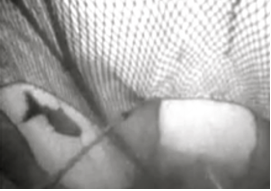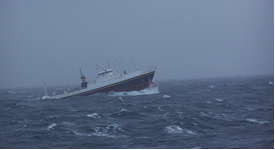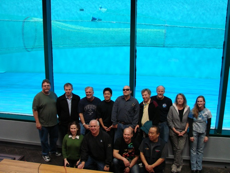| SUMMARY
The Bering Sea pollock fishery is one of the largest sources of wild, sustainable seafood in the world. It is also an outstanding example of the benefits of a cooperative-based Catch Share fishery. Under this Catch Share management plan, the race for fish has been replaced by a quota system that creates incentives for cooperation between fishermen, processors, scientists and fisheries managers. As a result, all of these stakeholders now work together to minimize adverse environmental impacts on the seafloor and other species of fish. One of the best examples is the collaborative work to develop Chinook salmon excluders. A salmon excluder is a device built into the fishing vessels nets that allow a non-target species (a fish you do not want to catch) to escape the net unharmed. Some fish excluders are based on the difference in size between target and non-target fish; but in the case of Chinook salmon, the excluder is a more complex device based on the different swimming behaviors of salmon and pollock. Salmon excluders are now used by the majority of the Bering Sea pollock fleet, even though some pollock also escape the net. Since the fleet began using salmon excluders, Chinook salmon bycatch has been significantly decreased.
|
 A Chinook salmon safely swims out of a pollock net through the salmon excluder “portals”.
|
The Science of Chinook Salmon Avoidance
The successful Chinook salmon avoidance program developed by the fleet, processors, scientists and fisheries managers is based on three significant strategies:
The development of the Chinook Salmon Excluder started with underwater video camera observations, which show that salmon, given the right conditions, are strong enough to swim forward in a net while pollock are not. This behavioral difference has been used to develop a new, complex net design that allows Chinook salmon to move forward in a net and then escape through a large “portal” – essentially a very large, carefully engineered hole in the net. Of course, it is better for everyone if the Chinook salmon never get into the net in the first place. In an attempt to avoid large concentrations of salmon entirely, the fleet also uses “Rolling Hot Spot” area closures. Under this program, observer data from the fishing vessels is collected and analyzed while fishing is occurring. When a “hot spot” is identified, the fleet is required to move out of the area. These two programs are significant examples of the benefits of Catch Share management fisheries; because the fleet, working in a cooperative manner, can react much faster than government regulators or managers. |
Learn more about the use of Flume Tanks |




